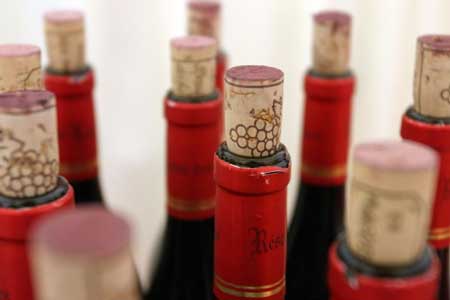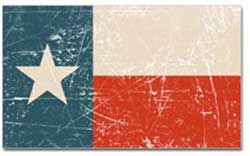Recognizing Great Wine….Guest Blog by Michael Vilim
 Michael Vilim is an Austin-based restaurateur with two first-class restaurants: Mirabelle and Castle Hill Cafe. He also serves on the Board of Directors for The Wine and Food Foundation of Texas, a charitable organization that supports scholarships for deserving culinary students and grants for deserving educational projects. http://www.winefoodfoundation.org/
Michael Vilim is an Austin-based restaurateur with two first-class restaurants: Mirabelle and Castle Hill Cafe. He also serves on the Board of Directors for The Wine and Food Foundation of Texas, a charitable organization that supports scholarships for deserving culinary students and grants for deserving educational projects. http://www.winefoodfoundation.org/
—————
How many times has it happened to you? Somebody who is kind of a wine expert, insists you try this fabulous wine, their very favorite —and you just HATE it!
Instead of the glorious pleasure this huge build up has led you to expect, now you must endure that puzzled look of dismissal, as if to say, “Why am I wasting my treasures on such a heathen?” The crazy thing is that, indeed, the wine might truly be great, just not for you.
 In researching what various wine writers considered elements of greatness in wine, all of them agreed that what makes a great wine today is the same as 100 years ago: Richness and complexity, originality and terroir, but most, importantly, a “somewhere-ness” about the wine. Too much wine available in the U.S is soft and fruity – as unique as airports and in search of a price point for a heavily promoted supermarket shelf that appeals to the lowest common denominator.
In researching what various wine writers considered elements of greatness in wine, all of them agreed that what makes a great wine today is the same as 100 years ago: Richness and complexity, originality and terroir, but most, importantly, a “somewhere-ness” about the wine. Too much wine available in the U.S is soft and fruity – as unique as airports and in search of a price point for a heavily promoted supermarket shelf that appeals to the lowest common denominator.
The greatest challenge in wine appreciation is to recognize originals. Having obtained a little token of flavor from some real place in the world, somewhere across the globe or right outside our own city limits, we hopefully celebrate its uniqueness and originality.
But, eventually everyone begins to wonder what a truly great bottle of wine actually tastes like and will suffer through bottles they don’t enjoy to find that out. And, just as soon as one departs from the “I like it/I don’t like it” stage of wine appreciation, one has become something of a connoisseur.
So one element of great wines is richness: thick, intense flavors and textures that seem to go on and on. Varietal correctness is another element of great wines. Does it taste like Cabernet Sauvignon, Pinot Noir, Sangiovese (Chianti) or Tempranillo (Rioja)? Balance and harmony are also elements of greatness.
 In Texas, our rapidly expanding wine industry is no different: Terroir will eventually determine what will become our representative wines. The pioneers in the Texas wine industry produced wines styles they loved and appreciated from their travels mostly in France: Chardonnays, Cabernet Sauvignon and Merlot. Excellent examples have been made, but these varietals in Texas may ultimately perform more like the Italian or Spanish versions, crisper and leaner than in Bordeaux or California, a condition of our warmer weather and shorter growing season.
In Texas, our rapidly expanding wine industry is no different: Terroir will eventually determine what will become our representative wines. The pioneers in the Texas wine industry produced wines styles they loved and appreciated from their travels mostly in France: Chardonnays, Cabernet Sauvignon and Merlot. Excellent examples have been made, but these varietals in Texas may ultimately perform more like the Italian or Spanish versions, crisper and leaner than in Bordeaux or California, a condition of our warmer weather and shorter growing season.
The emergent varietals today in Texas, are those perhaps more suitable to hotter weather, such as Viognier, Sangiovese (the grape of Chianti), and Grenache and Syrah which are red varietals that are blended in Cote du Rhone and Chateauneuf du Pape. Even Touriga Nacional, the Portuguese national grape and primary varietal in Port, is finding Its place here, too. Also, Texas produces fabulous Muscat, also called Moscato in Italy, and our Sauvignon Blancs can be terrific.
As the vines in Texas mature, more intensely flavored and big scaled wines are starting to be produced here, and with Texans love affair with big-impact food, it seems somewhere down that terroir-driven road lies the future of great Texas wines.
——————
Click here to view a Wine and Food Foundation video!
http://www.winefoodfoundation.org/video/index.html

Michael:
You are so right about it taking a lot of time to find the right varietal for the right Terrior. I am so envious because my kids will know more about this, when I am long gone.
Neal Newsom Winegrower Plains, Tx
Neal,
You are a very humble man. I believe that if anyone has terroir in Texas it is you.
You know those milk commercials – Got Milk!
I think that you could advertize your vineyard as…..Got Terroir!
Russ